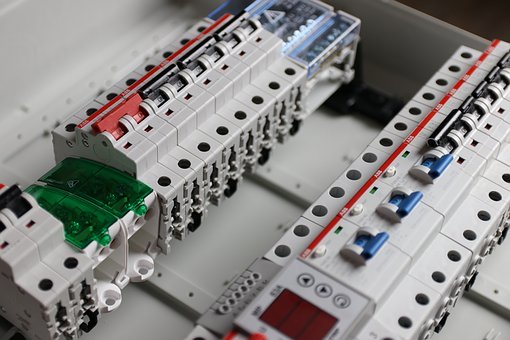WHY YOUR CIRCUIT BREAKER KEEP TRIPPING?
2022-08-17
2020-03-16
Generally, there are several reasons for circuit breaker tripping.

Overload circuit is the most common cause of circuit breaker trip. Overload means that too many high-power electrical appliances are used at the same time. This happens when the circuit tries to pull a larger electrical load than expected. When too many electrical appliances or lamps work at the same time, the internal induction mechanism in the circuit breaker will heat up, and the circuit breaker will "trip" to prevent circuit damage, or even to prevent possible major fire. The circuit remains open until the breaker lever is reset to the on position.
2. Short Circuit
Another common cause of circuit breaker trip is short circuit, which is more dangerous than overload circuit. The short circuit may be a short circuit of an electrical appliance or concealed wires. Do not plug in any electrical equipment to try. If it still jumps, the short circuit should be considered in the circuit.
When a hot wire (black) contacts the neutral wire (white) in a power outlet, it will cause a ‘hard short circuit’. When this happens, a large amount of current will flow through the circuit and generate more heat than the circuit can handle. When this happens, the circuit breaker will trip and cut off the circuit to prevent dangerous events such as fire. When the circuit breaker trips again immediately after reset, it can be known that it is a short circuit problem.
A short circuit can also be caused by a variety of reasons, such as faulty wiring or loose connections. You can identify the short circuit by the burning smell left around the circuit breaker. In addition, there may be brown or black discoloration around it.
3. Leakage
If it is a switch with leakage protection, the circuit or electrical appliance will trip if there is a little leakage, generally 30mA. When part of the house's lights and equipment dim or go out at the same time, it's because one of the circuit breakers ‘trips’ or one of the fuses is blown. ‘Repair’ is to reset the breaker control lever to the on position or replace the blown fuse. When there is a circuit breaker, the immediate solution is to find the tripped circuit breaker and reset the control lever to the on position. When the fuse is blown out, one of the wires in the fuse has blown through, which means that a new fuse needs to be replaced.
4. Ground Fault
If the hot wire contacts the ground wire or the metal wall box or the wooden frame, a special type of short circuit will occur, that is, ‘ground fault’. It is particularly dangerous when ground faults occur in areas with high humidity (such as kitchens or bathrooms) or in outdoor locations. There is a certain risk of electric shock due to ground fault.
As with a hard short circuit, a ground fault causes an immediate decrease in resistance and an immediate increase in current. This causes the internal mechanism of the circuit breaker to heat up and trip. As with a hard short circuit, if there is a ground fault, the circuit breaker may trip again immediately after reset.

So what should we do in these situations?
1. If it is the first case, it is OK to switch on less electric appliances and replace the larger circuit breaker. The premise is that your circuit should not be too thin, it should be larger than the rated capacity of the circuit breaker.
2. In the second case, if there is a short circuit in an electrical appliance, repair it. If the concealed wiring is short circuited, it must be checked by professionals.
3. In the third case, if an electrical appliance leaks electricity, plug in one electrical appliance one by one and start it up one by one. Try to find out which one jumps. It is the problem of this one. If there is leakage in the concealed circuit, non professionals can't find it out. Just replace it with a switch without leakage protection, but there will be less safety protection.
4. In the fourth case, people can take some steps to identify and repair the grounding fault. Some basic steps should also be taken to prevent the grounding fault first. For example, in areas where direct contact with ground or water is possible, building codes may require GFCIs (ground fault circuit breakers) to protect the outlets.
Previous:CIRCUIT BREAKER MAIN FEATURES




